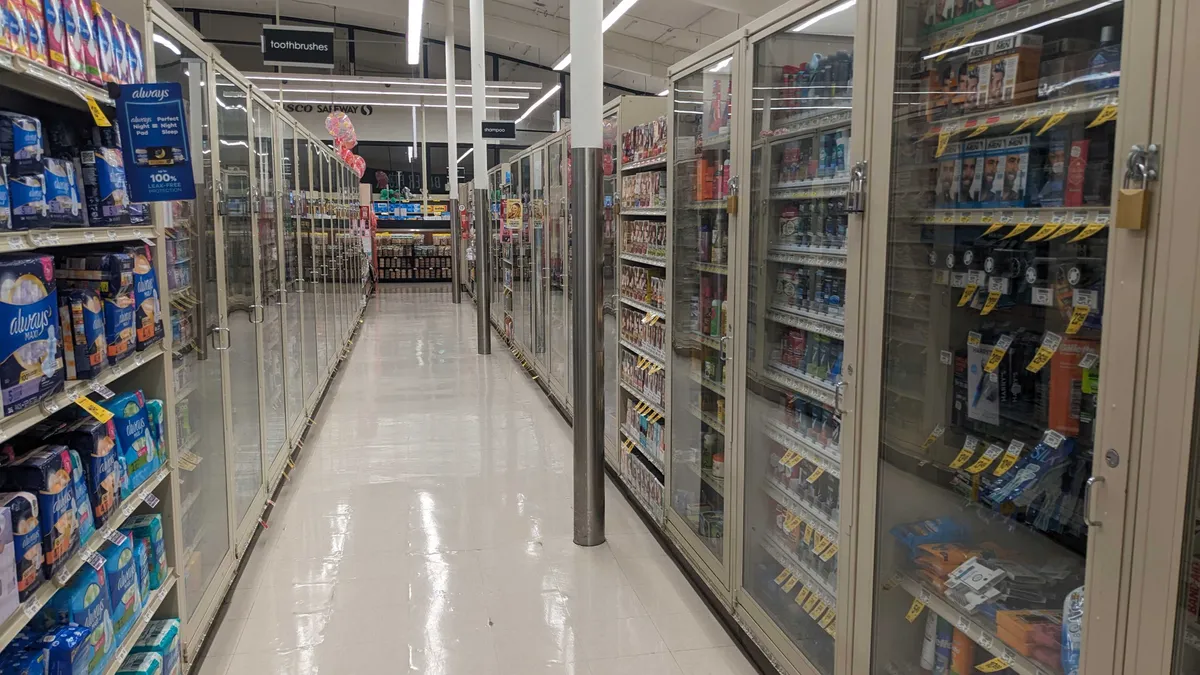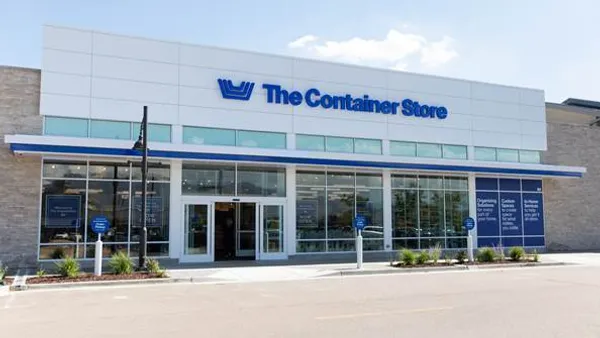Dive Brief:
- A majority of in-store shoppers — 60% — have encountered lock-up merchandise in stores on a regular basis, per a survey of more than 5,000 consumers conducted by data tech firm Numerator.
- Twenty-seven percent of shoppers said they would choose another retailer or abandon their purchase entirely if they came across locked-up products, but 62% said they would typically wait for assistance from an employee. The survey also found that those unwilling to wait for assistance will spend 21% of their dollars online compared to 18% for those who waited.
- Some 61% of shoppers reported seeing an increase in products locked up over the past year, with most of those being seen at drug stores and mass retailers.
Dive Insight:
Retail crime, including shrink, has been a hot topic in the industry in recent years.
“Retail shrink is out of control and theft is eroding retailer sales and margin,” Michael Brown, a partner with global strategy and management consulting firm Kearney, said in an email to Retail Dive. “Consumers are unable to purchase items that are out of stock either as a result of theft or because they’re locked behind glass and are not easily accessed when stores are short staffed. Sales are also impacted when the cost of protecting goods and staffing cabinets is built into the cost of the protected products – this manifests itself as inflation.”
A vast majority of consumers see products locked at mass retailers and drug stores, 68% and 62% respectively. Grocery stores (31%), department stores (25%) and home improvement stores (23%) also see their share of lock-ups.
“When faced with a locked product, there's more than a 1 in 4 chance shoppers will leave that retailer without making a purchase,” Amanda Schoenbauer, a Numerator analyst, said in an email. “This rises even higher if you're talking about younger shoppers, people with children, or if the locked items are in everyday categories like health and beauty.”
Locking up merchandise should be a last resort to combat theft, according to Brown, who pointed to other approaches, including employing security cameras, extra staffing and security tags.
Consumers in urban areas and the Western U.S. are seeing a much higher percentage of locked-up merchandise than other parts of the country, per the survey. Over half of consumers in the Riverside-San Bernardino-Ontario metro area are reporting high levels of locked-up products, 51% in Las Vegas-Henderson-Paradise, and 45% in Los Angeles-Long Beach-Anaheim.
For the last three decades, The National Retail Federation has conducted research on shrink, but in October it announced it would not be publishing its annual report this year. The trade group said it would release a new report on retail theft and violence later this year. According to the NRF’s latest data on the topic, which reflects numbers from 2022, 63% of lost inventory had internal causes, with 36% coming from external theft, including shoplifting, credit card fraud, organized retail crime, cargo theft and other retail crimes committed by nonemployees.












